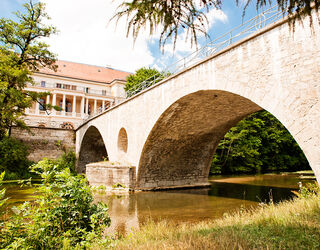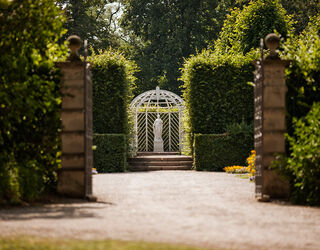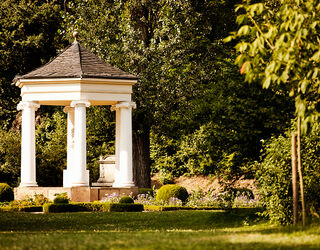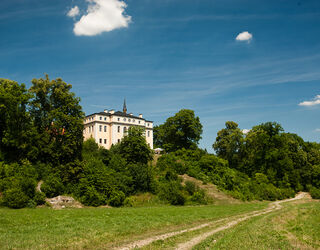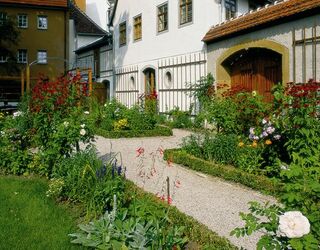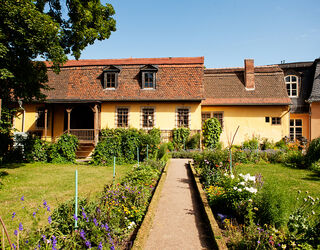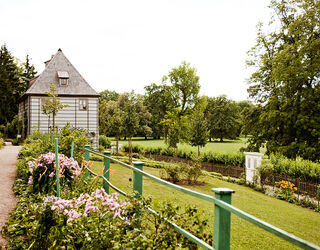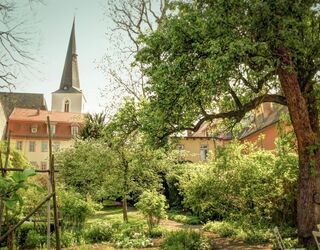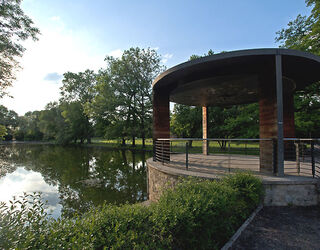Park on the river Ilm
With Goethe having been so closely involved in the layout of this landscape park, it’s no wonder that it features both classical and post-classical traits. One of its main attributes is the many lines of sight, while its most distinctive architectural feature is Roman House.
Belvedere Park and Orangery
The barock garden, build in a strict french manner, would later be transformed to a british garden. Accompanying the garden of joy and the orangery, a russian garden, hedge-garden and a labyrinth joined the repertoire.
Tiefurt Park
The first sections were laid out by Prince Constantine, the youngest son of Anna Amalia. When Anna Amalia relocated her summer residence to Tiefurt, she gradually continued working on the park. It was later rearranged and restored.
Ettersburg Park
The palace grounds, a jewel of Thuringian horticulture, are adjoined by Pücklerschlag (‘Prince Pückler’s Patch’) – an elongated glade with beautifully fashioned contours. One of the woodland aisles laid out 250 years ago has been cleared again and runs from Ettersburg Palace to Buchenwald…
Garden at Kirms-Krackow-House
Privy councillor Franz Kirms was one of Weimar’s floral enthusiasts and bred many botanical rarities. His niece Charlotte Krackow nurtured his legacy until into the twentieth century. The baroque summerhouse contains an exhibition on the history of flower cultivation in Weimar.
Garden of the Goethe Residence
The garden was used by Goethe’s wife, Christiane Vulpius, to provide the household with fruit and vegetables. At times, Goethe also performed botanical experiments here. The arrangement of plants in the garden has been preserved since 1820.
Goethe's garden in the Park on the river Ilm
When Goethe moved into the summerhouse in the park, he rearranged the garden in line with his needs to include an orchard, vegetable patches, herbaceous borders, rose trellises and winding footpaths in star formation. Goethe also had positioned the rock of 'Good Fortune’ here.
Garden at Herder House
Behind the church St. Peter and Paul vicarage are the gardens of the preachers and teachers. At one point, the famous theologian and philosopher Johann Gottfried Herder inhabited the superintendent’s quarters together with his large family, and the garden was used intensively.
Park at the weimarhalle
In 1932, the garden belonging to publisher Justin Bertuch, a contemporary of Goethe, was rearranged. Features typical of public parks of the day were added such as playing fields, an open-air swimming pool and other recreation areas.
Park Holzdorf
The Holzdorf park is considered by connoisseurs to be a high-ranking garden monument. The former owner Otto Krebs had the estate redesigned in the 1920s into a park in the style of French gardens, which is unique in Thuringia.
Anzeigen
